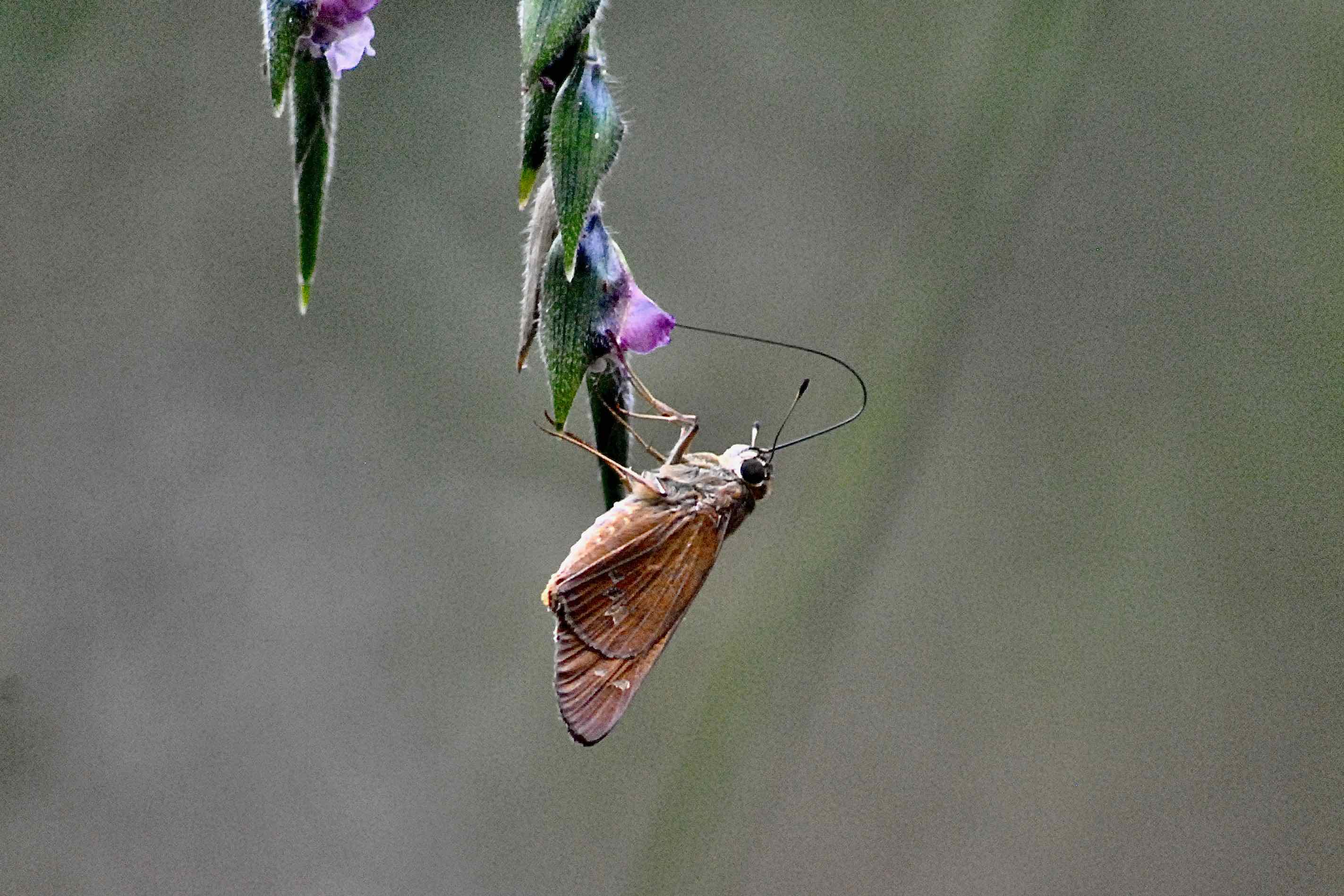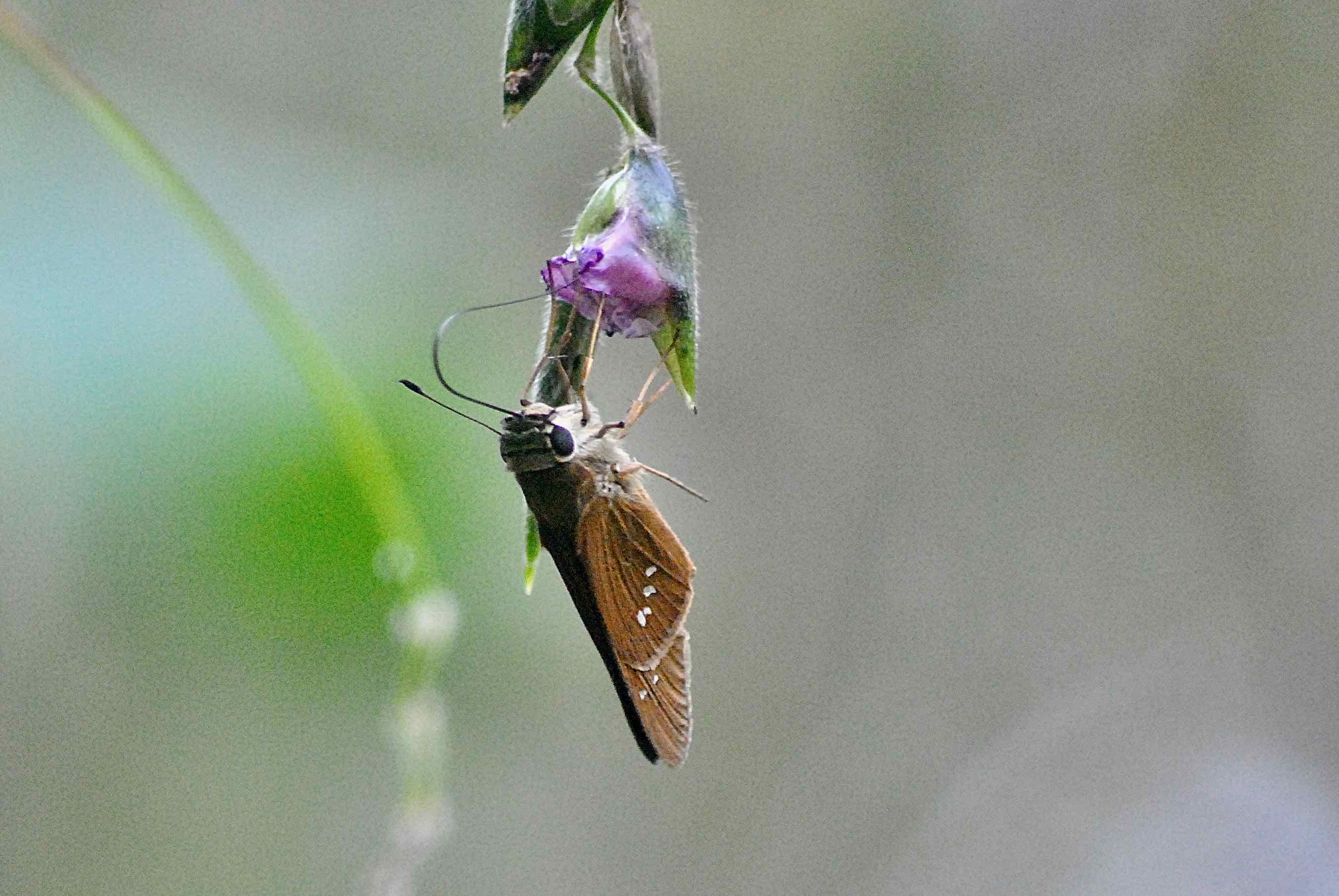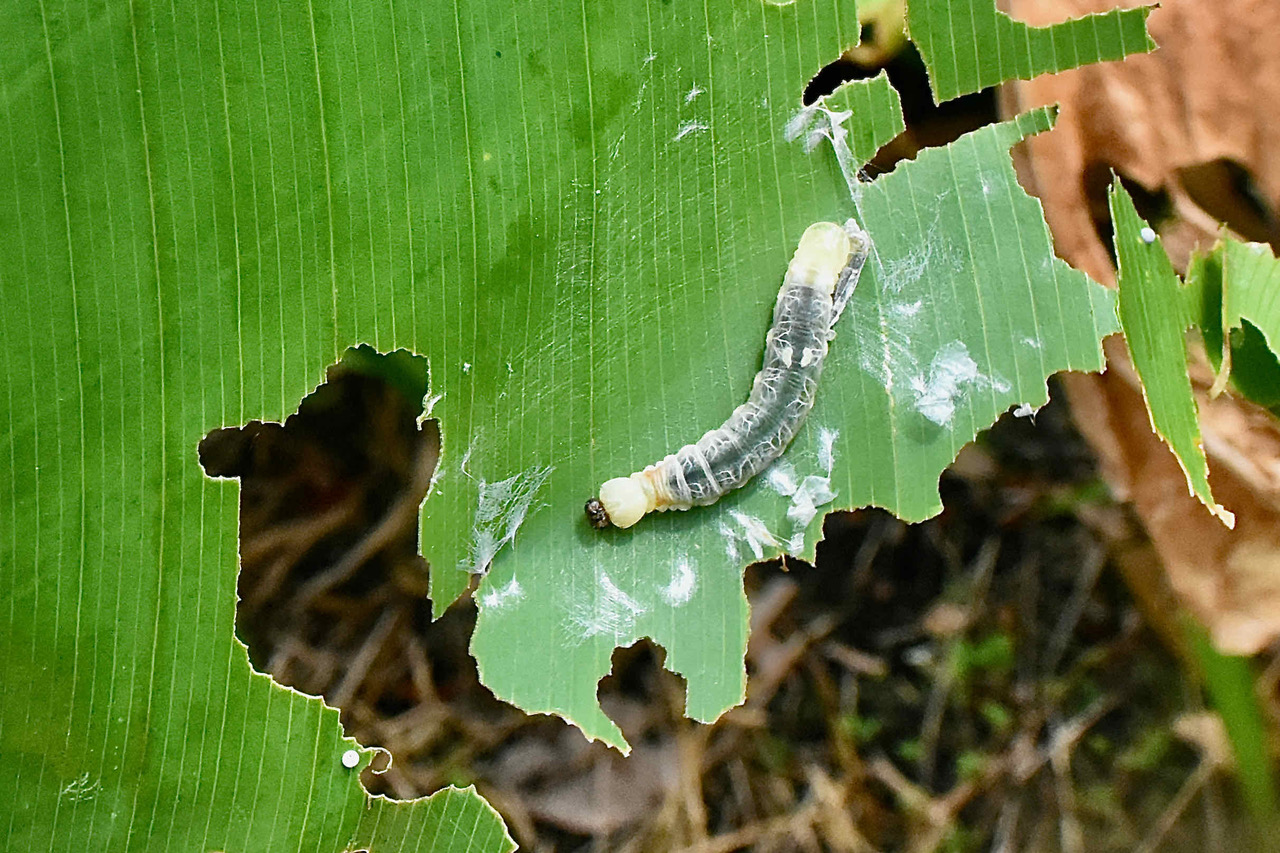
Brazilian skipper, photographed at Corkscrew Swamp Sanctuary, Naples, Collier County, in October 2013.
Despite the somewhat geographically specific name, the Brazilian skipper, Calpodes ethlius, can be found over a good chunk of the Americas — as far north as Massachusetts and as far south as Argentina.
It’s a Florida native, though an uncommon one in most parts of the state. Despite its relative rarity, some would argue that it’s still a little bit too common. We’ll explain in a moment. First, some Brazilian skipper basics.
Brazilian skippers are medium-sized butterflies, ranging in length between an one and three quarters inches and two and three-eighths inches. They range in color from basic brown to reddish brown, to orangish-brown. The hindwing has three or four cream-colored spots; the eyes have a white ring around them.
As noted above, Brazilian skippers have a wide range. They’re found throughout Florida, though rare in some parts of the state, as well as most of the southeast and south central United States, but they can wander into the New England states and parts of the Southwest. They're strong flyers — Brazilian skippers have been found in 24 states, though mostly strays rather than permanent populations.
Outside the U.S., they can be found in Mexico, the Caribbean, Central America and South America as far south as Argentina.
In South Florida, Brazilian skippers are in flight, or active, all year round. According to the University of Florida, adults have been spotted in every month of the year, but the number of generations produced isn’t known. They cannot tolerate cold weather at any stage of their lives, so populations in northern parts of their range must retreat south to escape the ravages of winter and move back come spring.
Brazilian skippers use Canna and arrowroot species as host plants (see photo bottom right). Females will lay eggs singly on the topside of the leaves but there can be numerous eggs on a single leaf.
Once the caterpillars hatch, they eat most of the remains of their eggs, then cut two strips into the leaf beginning at the leaf edge and working toward the leaf’s central vein. The idea is to make a flap, which it will use to cover itself. The caterpillar attaches strands of silk to the edge of the flap and then to the main part of the leaf.
As the silk dries, it tightens, pulling the outer edge of the flap inward and over the caterpillar, who is snug inside. He’ll pretty much remain there, except at night when he’ll extend out to eat. As the caterpillars grows — they go through five instar stages — they’ll make larger leaf wraps to suit their larger bodies. It’s believed Brazilian skippers do this to protect themselves from the sun and from predators.
And therein lies the problem with Brazilian skippers. Canna are beautiful flowers frequently used as ornamentals. The caterpillars have large appetites, especially when they reach the fifth instar stage, and, if numerous enough, they can defoliate their host. Which makes these butterflies unpopular with gardeners.
Brazilian skippers are also known as the canna butterfly, arrowroot butterfly and canna leafroller. They are members of Hesperidae, the skipper family.
Corkscrew Swamp Sanctuary
It’s a Florida native, though an uncommon one in most parts of the state. Despite its relative rarity, some would argue that it’s still a little bit too common. We’ll explain in a moment. First, some Brazilian skipper basics.
Brazilian skippers are medium-sized butterflies, ranging in length between an one and three quarters inches and two and three-eighths inches. They range in color from basic brown to reddish brown, to orangish-brown. The hindwing has three or four cream-colored spots; the eyes have a white ring around them.
As noted above, Brazilian skippers have a wide range. They’re found throughout Florida, though rare in some parts of the state, as well as most of the southeast and south central United States, but they can wander into the New England states and parts of the Southwest. They're strong flyers — Brazilian skippers have been found in 24 states, though mostly strays rather than permanent populations.
Outside the U.S., they can be found in Mexico, the Caribbean, Central America and South America as far south as Argentina.
In South Florida, Brazilian skippers are in flight, or active, all year round. According to the University of Florida, adults have been spotted in every month of the year, but the number of generations produced isn’t known. They cannot tolerate cold weather at any stage of their lives, so populations in northern parts of their range must retreat south to escape the ravages of winter and move back come spring.
Brazilian skippers use Canna and arrowroot species as host plants (see photo bottom right). Females will lay eggs singly on the topside of the leaves but there can be numerous eggs on a single leaf.
Once the caterpillars hatch, they eat most of the remains of their eggs, then cut two strips into the leaf beginning at the leaf edge and working toward the leaf’s central vein. The idea is to make a flap, which it will use to cover itself. The caterpillar attaches strands of silk to the edge of the flap and then to the main part of the leaf.
As the silk dries, it tightens, pulling the outer edge of the flap inward and over the caterpillar, who is snug inside. He’ll pretty much remain there, except at night when he’ll extend out to eat. As the caterpillars grows — they go through five instar stages — they’ll make larger leaf wraps to suit their larger bodies. It’s believed Brazilian skippers do this to protect themselves from the sun and from predators.
And therein lies the problem with Brazilian skippers. Canna are beautiful flowers frequently used as ornamentals. The caterpillars have large appetites, especially when they reach the fifth instar stage, and, if numerous enough, they can defoliate their host. Which makes these butterflies unpopular with gardeners.
Brazilian skippers are also known as the canna butterfly, arrowroot butterfly and canna leafroller. They are members of Hesperidae, the skipper family.
Corkscrew Swamp Sanctuary



